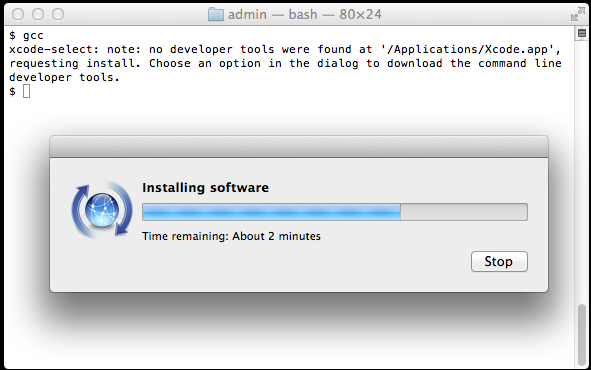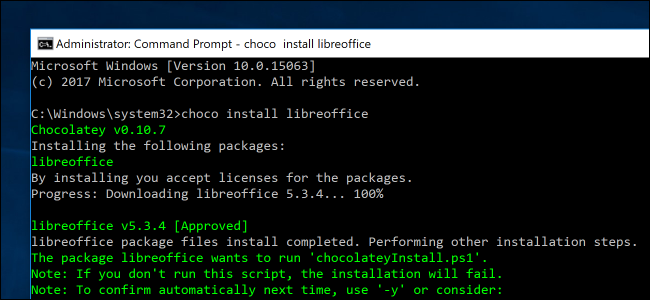Install Software Mac Command Line
- Install Software Mac Command Line Windows 10
- Install Software Mac Command Line Free
- Mac Os Install Software Command Line
- Apple Command Line Tools
Installing applications on macOS and OS X computers is easy to do when deploying the apps as packages through the Terminal using the Installer command for quiet deployments across your network. Aug 13, 2018 A package manager is a command line tool that gives me access to a myriad of pre-built (or sometimes to source code if desired) software packages to install and download on my computer. I could open a terminal and simply type in a command to tell the package manager to download and install any freely available open source software my heart (and.
Create stunning designs with your photos and videos—even if you’re not a design expert! Whether you need an Instagram story, logo maker, or birthday invitation—create all these graphic design needs and more on Canva. Available on your iPhone, iPad, and computer so you can jump back into your design anytime, anywhere. HOW TO USE CANVA 1. Whether you're a pro designer animating 3D objects, a beginner experimenting with drawing apps, or someone in need of a PDF editor or converter, find the best graphic design software for the job here. Browse and download Graphics & Design apps on your Mac from the Mac App Store. The Mac App Store has a wide selection of Graphics & Design apps for your Mac. Luckily, there are also many free applications out there that can do the same kind of job that Photoshop could do for you. This article rounds up the best 15 free Mac Programs for Graphic Designers. Some of these applications can even do stuff that can't be achieved using. Free apps for graphic design in mac. In this post we bring you a selection of top 10 best free graphic & design Apps found in the Mac App store that will allow you to increase your productivity and save ample amounts of time with minimal effort. MAC Apps App Cleaner. AppCleaner is a small application which allows you to thoroughly uninstall unwanted apps.
| Click here to return to the 'Installing packages from the command line' hint |

- Jan 13, 2011 To see what updates are available for a Mac, or to install a software update from the Terminal of Mac OS X, amongst many other options including how to ignore particular updates, you’ll use the ‘softwareupdate’ command line tool as we’ll instruct below. Read on to learn about using the command line software update utility on the Mac.
- Apr 18, 2007 Installing software updates from the command line is incredibly useful for remote management of machines, just SSH into a Mac and run the appropriate commands. Read on for more To install software updates from the command line, you’ll use the aptly named ‘softwareupdate’ command.
is that some packages (notably Fink) don't work using this installer application. Kind of frustrating when you need a command-line app on a remote computer and you can't install Fink in order to install the app! :-)
---
www.AcornWebDesigns.com
Quality websites for inexpensive prices (Is that an oxymoron?)
I also discovered this installer command the day that I read the recent article here about installing a no-ip linux client as a startup item. The .pkg that was pointed to by that article did not work via the command line. I had to do it from home. Even then it still didn't seem to be workgin right, though, so I removed it and installed the fink version which seems to be working, once I understood how to set that version up. A fully working command-line installer is much needed, but if it works on some things now that's still pretty good..
---
--- I hate Microsoft and I vote
cd /
sudo /usr/sbin/installer -pkg /path/to/pkg.pkg -target / ---
4am Media, Inc. Mac OS X Training and Consulting
sudo reboot is a harsh command, I believe you'd use all unsaved documents, I wouldn't recommend doing it this way.
Something like:
sudo osascript -e 'tell application 'Finder' to restart'
Would be much better. It would get canceled if there is unsaved data.
arr, but if your using the cli to install packages most likely the box is on a remote site, so u cant press 'save' or 'don't save' and the restart would time out
there has to be away of avoiding this because it would be nice to be able to restart and / or log out a user via the cli
jameso
---
'The time has come,' the walrus said. 'To talk of many things..'
Then use localhost & port 5900 in your vnc client. You can have the remote machine always running the vnc server, or run it from the ssh shell.
Install Software Mac Command Line Windows 10
Of course, if you go this route, isntalling via the CLI is pointless since you can just do it via the GUI.

Install Software Mac Command Line Free
The applescript is all very nice, but if no one is logged into the remote machine is does not work, the response is '29:36: execution error: Application isn't running (-600)' (tested with OS X 10.3.5)
This is great. Now if only I could create packages from the command line rather than using PackageMaker interactively.
You can create packages from the command line. i've done it in 10.4, but haven't tried in 10.5.
in tiger, PackageMaker will load in /Developer/Applications/Utilities/PackageMaker.app
but really all .app's are just folders, so you can call the CLI by /Developer/Applications/Uitilities/PackageMaker.app/Contents/MacOS/PackageMaker
you'll have to feed it a number of flags like -build and -p.. i think there's a man page for it somewhere.
If you look in /usr/sbin/ a couple of utils already stand out because of their name:
AppleFileServer
AppleSystemProfiler
DirectoryService
PasswordService
installer
softwareupdate
am-eject
nvram
system_profiler
appletalk
asr
bootparamd
disktool
screencapture
diskutil
You can find out what they do by looking at their man pages or running them (not as root obviously)
Some of these don't have man pages. Notably (for me):
opendiff - run the cocoa diff utility on two files
scselect - select network location
disktool - I'm sure this does something handy
